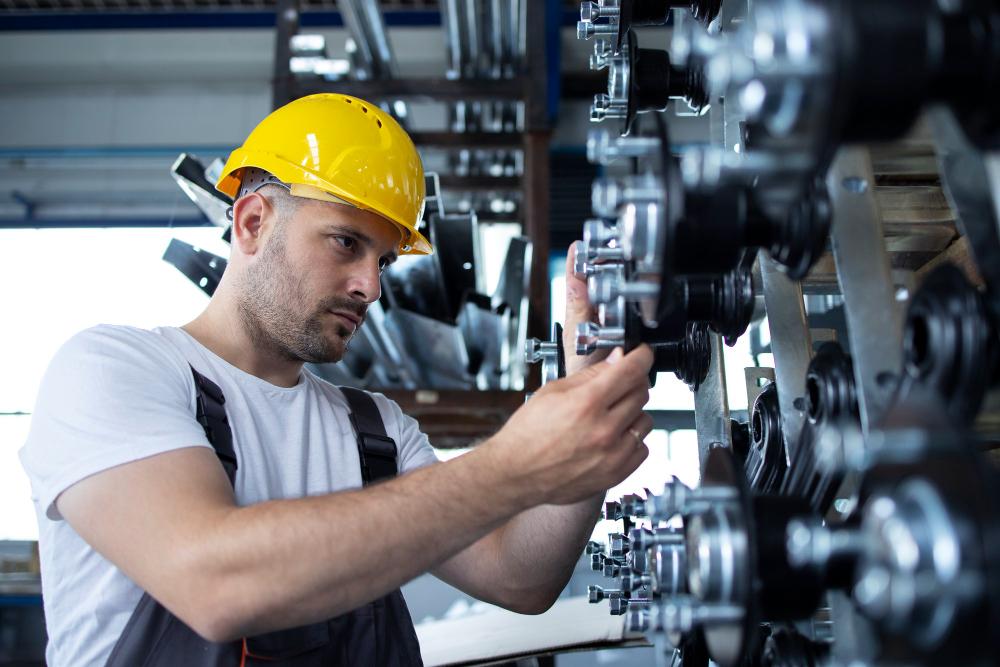In heavy industries, a single equipment failure can lead to serious downtime and hefty financial hits. That’s precisely why diagnostic technologies are essential for keeping everything running smoothly. These tools are absolute game-changers, spotting potential issues early on and preventing them from becoming major headaches later.
Catching Problems Early to Minimize Downtime
Predictive maintenance technologies are at the forefront of nipping machinery failures in the bud before they even begin. These high-tech tools monitor your equipment’s performance in real time, analyzing data to catch issues before they spiral out of control.
They rely on sensors to track things like vibration, temperature, and pressure, alerting the maintenance team the moment anything seems amiss. This proactive approach lets you tackle problems early, reduce downtime, and extend the life of your machines.
Tuning Into Your Machinery’s Health
Vibration analysis is a crucial diagnostic tool that’s awesome at catching early warning signs in machinery. Technicians monitor how much and how often the equipment vibrates to identify issues like imbalances, misalignments, or even bearing failures.
Regularly checking these vibrations helps spot problems before they turn into major, costly headaches. The best part? This technique is non-invasive and doesn’t mess with the normal running of your machines.
Checking Under the Hood: Oil and Fluid Analysis
Oil and fluid analysis is a vital diagnostic tool that gives you a sneak peek into the inner workings of your machinery. By checking out the chemical makeup and contamination levels of the fluids flowing through your machines, this technique offers crucial insights into the condition of your engines and hydraulic systems.
It can spot common issues such as wear, overheating, and contamination. Keeping up with regular checks ensures that your machinery stays well-lubricated and cool, which is crucial for smooth and dependable operation.
Spotting Heat Issues Before They Boil Over
IR Thermography is a critical diagnostic tool that lets you see and verify how hot different parts of your machinery are getting. This technology is invaluable for keeping both electrical and mechanical systems in check by spotting heat irregularities that often lead to equipment failures.
Using IR thermography, technicians can quickly find parts that are overheating, measure exactly how hot they are without touching them, and record all this info in detailed reports. Catching these hot spots early on helps prevent major problems like production halts and full-on equipment breakdowns.
Hearing What You Can’t with Ultrasound Detection
Ultrasound detection uses high-frequency sound waves to pick up on subtle changes in machinery that we can’t hear with our ears. This tech is especially good at finding leaks in pneumatic and hydraulic systems, and it’s also great for spotting problems like faulty steam traps and electrical discharges. Early detection through ultrasound enables prompt resolution, preventing potential performance setbacks or equipment breakdowns.
Keeping the Power Flowing Smoothly
Regular electrical inspections are crucial for dodging outages and preventing fire hazards in heavy industries. Tools like infrared cameras and digital multimeters are super helpful for checking out the state of electrical components and catching problems like loose connections or corrosion before they get worse.
Setting up a routine inspection schedule means these potential problems get fixed before they can do serious damage or stop production. Plus, keeping detailed records of these inspections helps in predicting when maintenance will be needed next, ensuring electrical systems run reliably for longer.
Streamlining Monitoring with Integrated Technologies
To really harness the power of diagnostic technologies, it’s crucial to merge different methods into a unified monitoring strategy. Combining vibration analysis with tools like IR thermography, which spots heat anomalies, and adding ultrasound detection and fluid analysis, gives a full picture of machinery health.
This combination allows for data cross-checking, which boosts the accuracy of your diagnostics and enhances maintenance effectiveness. Using cloud-based platforms to collect and analyze this data also sharpens maintenance processes by enabling predictive analytics, enhancing operational efficiency and giving deeper insights into equipment performance trends for better long-term planning.
Acting Fast with Real-Time Monitoring
Real-time monitoring of machine health is changing the game in how industries handle and react to issues. These systems continuously gather and analyze data, giving immediate insights into machine performance.
This quick feedback lets maintenance teams respond rapidly to any anomalies, cutting down significantly on the time it takes to spot and solve problems. Swift action can stop small issues from turning into big failures, keeping operations smooth and uninterrupted. This kind of proactive monitoring is crucial in industries where any downtime means a direct hit to productivity and profits.
Summing Up
Diagnostic technologies are essential in heavy industries, and play a crucial role in preventing machinery failures. With these advanced tools, companies can dodge the steep costs that come with equipment breakdowns and unexpected downtime. More than just saving money, these technologies boost both safety and efficiency in industrial operations while helping ensure that machinery operates smoothly and reliably for the long haul.
